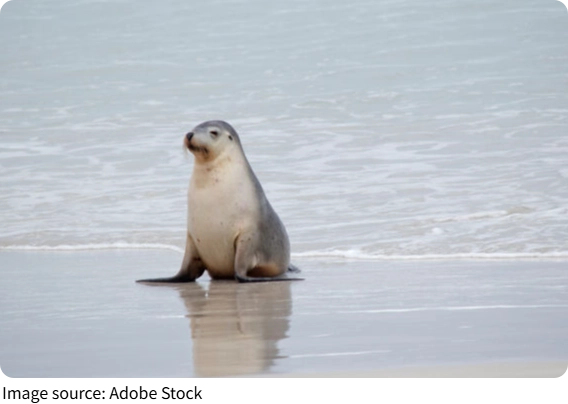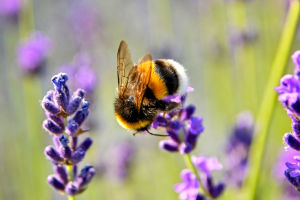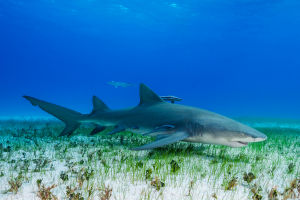Walrus Whiskers' Secret

Have you ever wondered why walruses have such long and thick whiskers? We often associate whiskers with facial expressions or animal communication, but for walruses, these whiskers are a lot more than just a cute feature.
In fact, their whiskers are highly sensitive sensory tools that help them navigate the ocean floor. Believe it or not, these whiskers can actually detect objects like shells and small prey hidden beneath the water's surface! Let's dive deeper into this fascinating ability and how it helps walruses thrive in their aquatic environment.
The Role of Whiskers in Walruses' Lives
For walruses, whiskers, also known as vibrissae, play a crucial role in their survival. These whiskers are not just for show—they are highly specialized, tactile organs that help walruses sense their surroundings. Walruses use their whiskers to detect vibrations and movements in the water, which allows them to find food, communicate with each other, and even explore their environment.
Unlike the whiskers of other animals, which may be limited to detecting touch or air movement, walrus whiskers are incredibly sensitive to pressure changes in the water. This sensitivity allows them to detect even the slightest movements from underwater creatures, such as clams, lobsters, and other shellfish, which make up a large part of their diet. By using their whiskers to "feel" the seabed, they can locate hidden food sources and unearth them with their powerful tusks.

How Walruses Use Their Whiskers to Find Food?
Walruses are known to be bottom-feeding animals, which means they forage for food at the ocean floor. But how do they find food in such murky waters, where visibility is often limited? That's where their whiskers come into play. The whiskers act as a super-sensitive tool, helping walruses to "feel" the environment around them.
When a walrus dives into the water, it uses its whiskers to explore the ocean floor, brushing them over rocks, shells, and the sandy seabed. These whiskers can detect the faintest of vibrations, such as the movement of clams opening or the subtle shifts of other buried prey. This ability allows the walrus to locate food sources that are buried under the sand or hidden among rocks, which might otherwise be invisible to them.
The Science Behind the Sensory Power of Whiskers
So, how do walruses' whiskers manage to detect such fine details underwater? It all comes down to the special structure of their vibrissae. Each whisker is rooted in a deep follicle that is rich in nerve endings, making it highly sensitive to pressure changes. In fact, the whiskers are so sensitive that they can pick up minute changes in the water, such as the movement of a small shell or even a tiny crustacean.
These whiskers are also surrounded by sensitive skin, which helps amplify their tactile sensitivity. When a walrus touches an object, the whiskers send signals to the brain, allowing the walrus to "feel" its way around. This extraordinary sense of touch is especially useful in low-visibility environments, where sight alone wouldn't be enough to locate food.
The Importance of Whiskers in Social Behavior
Aside from being essential tools for foraging, walrus whiskers also play a role in social interactions. Walruses are social animals that often live in large groups, and they use their whiskers to communicate with each other. During interactions, they may gently touch each other's whiskers or use them to explore their surroundings.
Whiskers also help walruses maintain balance and coordination, which is crucial when they're on land. For instance, when a walrus is navigating rocky shores or ice floes, it uses its whiskers to help gauge the terrain, ensuring it doesn't stumble or fall. This added sensory input contributes to their overall stability and comfort in their environment.

What Makes Walrus Whiskers Unique?
Walrus whiskers are unique in many ways, especially compared to the whiskers of other animals. While most animals use their whiskers for basic sensory functions, such as detecting nearby objects or navigating in the dark, walruses have taken this skill to a whole new level. Their whiskers are not just tools for exploration—they are finely tuned sensory instruments that allow them to thrive in an often harsh and unforgiving environment.
Unlike the whiskers of some other marine animals, walrus whiskers are incredibly thick and numerous, providing them with more surface area to sense changes in their surroundings. These whiskers are also equipped with specialized nerve endings that make them more sensitive to even the slightest of vibrations, which gives walruses an edge when foraging for food on the ocean floor.
Conclusion: The Amazing Adaptability of Walruses
In conclusion, walruses' whiskers are much more than just an adorable feature of their face—they are vital tools that help them survive in their aquatic world. From detecting hidden food to maintaining balance and even facilitating social interactions, these whiskers are essential to the walrus' everyday life.
Next time you see a walrus, take a moment to appreciate the amazing abilities their whiskers provide. Whether they're foraging for clams or simply exploring their environment, these whiskers are a true testament to the wonders of the natural world. Have you ever wondered what other animals might have unusual senses like the walrus? Share your thoughts with us!
-
 Busy Little HeroesWhy Bees Matter More Than You Think: The Hidden Role of Bees in Global Ecosystems.
Busy Little HeroesWhy Bees Matter More Than You Think: The Hidden Role of Bees in Global Ecosystems. -
 Floral Fragrance SecretsEver wondered why flowers have such captivating scents? Let's explore the fascinating reasons behind their fragrance!
Floral Fragrance SecretsEver wondered why flowers have such captivating scents? Let's explore the fascinating reasons behind their fragrance! -
 Do Sharks Sleep?Do sharks sleep while swimming? Let’s dive into the mystery of shark behavior and explore how these incredible creatures rest.
Do Sharks Sleep?Do sharks sleep while swimming? Let’s dive into the mystery of shark behavior and explore how these incredible creatures rest.